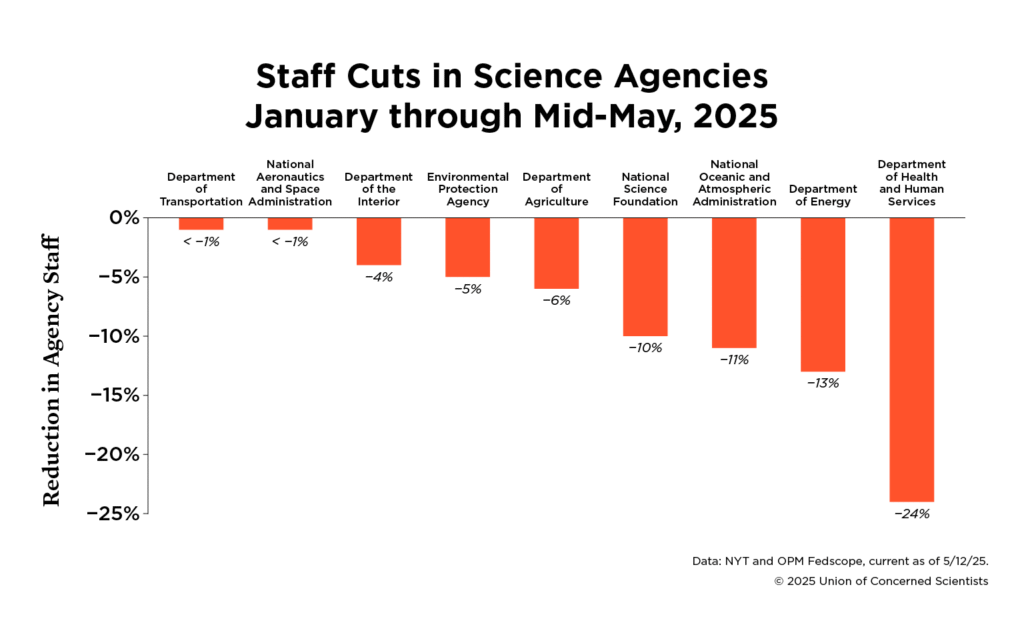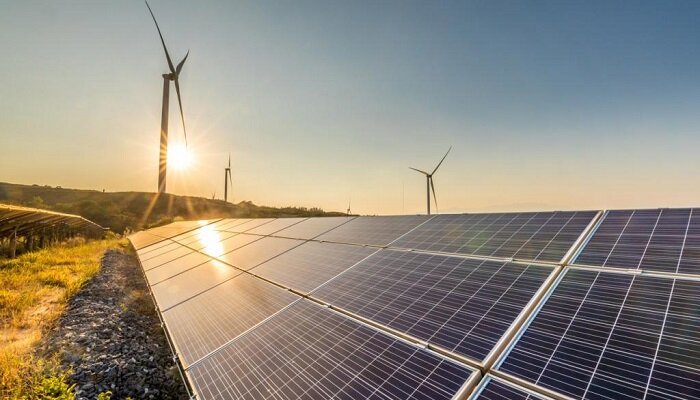Abstract: China’s integration of renewable energy research, organization, and technology is outpacing the U.S., which under the Trump administration, is burying renewable energy and counting on a fossil fuel-based future. These opposing trends will benefit China’s economic diplomacy but are bad news for the global environment and U.S. consumers.
Key words: US-China energy competition; renewable energy; China foreign policy; fossil fuel industry; Trump environmental policy
Two Paths to Avoiding Energy Dependence
When it comes to planning energy’s future, China and the U.S. are moving in opposite directions. As the New York Times reported: “The Trump administration wants to keep the world hooked on fossil fuels like oil and gas . . . China is racing in an altogether different direction. It’s banking on a world that runs on cheap electricity from the sun and wind, and that relies on China for affordable, high-tech solar panels and turbines. China leads the world in both.”[1] Both countries want to reduce dependence on foreign suppliers of oil and gas, but each is banking on a different home-grown energy source and pursuing scientific and technological research and development in different directions. In this competition, I argue, China is almost certain to be the winner because, by harnessing together renewable energy, research, and technology, it is not only transforming China but potentially much of the world.
Energy security is also the chief motivator for the U.S., where Donald Trump preaches “energy dominance.” He has found several ways to subsidize the fossil fuel industries and spike plans for a future based on renewable energy sources. Trump supports drilling everywhere, most recently opening huge areas of the Tongass and other national forests while at the same time eliminating hundreds of environmental protection regulations.
Xi Jinping’s aim to avoid dependence on foreign sources of energy was most recently underscored when Iran, a major source of oil for China, came under U.S. attack. Coal has long been China’s primary energy source, making China the world leader in fossil fuel emissions. But unlike Trump, Xi is prioritizing renewable energy development in recognition that excessive reliance on coal and oil harm public health, agriculture, and the environment. Clean energy sources of electricity are rapidly rising in importance, though the production process, from mining to factory, probably has also harmed worker safety and health.[2]
The Chinese Advantage
China has a large and growing lead in green energy technologies: solar panels, wind turbines, batteries, and electric vehicles, among others. The Trump administration is busily cutting subsidies to all these industries. The other day he again revealed his ignorance about the subject when he complained that China exports wind turbines but doesn’t use wind power. In fact, China is the world leader in wind farms. And it accounts for three times the wind energy the U.S. produces. Meantime, Trump’s budget bill will, in the estimate of The Rhodium Group, a research firm, put a stop to between 57 and 72 percent of new solar and wind projects.[3]
China’s technological lead is fortified by its dominant position in the mining and processing of rare earth minerals. You can’t operate wind turbines, drive an EV, or produce any advanced technology without those minerals. Rare earth magnets are China’s hammer over numerous U.S. industries. Now that the U.S. has removed “national security” restrictions on Nvidia AI chip exports to China, China’s commerce ministry is again approving applications for exporting rare earth magnets to the US. But the approval process is only for six months. If trade or other tensions reignite, count on the Chinese to shut down rare earth exports again.
Both countries are exporting their energy models—the U.S. by trying to persuade customers (most recently, Japan and, yes, China) to buy American oil, China by winning over developing countries with green energy technologies (such as Indonesia and Malaysia). For example, China leads the world by a large margin in exports of lithium-ion batteries, EVs, and solar panels, while the U.S. is far ahead of China in exports of oil and natural gas. Guess in whose direction countries in the Global South are leaning.
Finally, China’s lead over the U.S. is growing in nuclear power. China has twenty-four nuclear plants in operation and over 1,000 in various stages of construction, nearly as many as the rest of the world combined. Its current nuclear power capacity puts China third behind the U.S. and France, but not for long. Beijing has announced advances in next-generation nuclear technologies and in nuclear fusion.
Riveted on Success
China’s energy advantage has been shaped significantly by the organization of work. Robotics plays an increasingly important role in factories. “Cluster manufacturing” brings all the elements of production together. As one Chinese solar panel manufacturer says: “There are places where, within a three- to four-hour drive, you can have everything. The components, the manufacturer, the skilled workforce, everything. There’s nowhere else globally where you can have all that innovation clustered together.”[4] The scale of China’s green energy operations is staggering: solar parks, wind farms, hydropower stations, and EV factories employ tens of thousands of people. Compare that with Trump’s budget cuts in renewable energy projects, which means “ghost factories” and hundreds of thousands of jobs lost. North America’s Building Trades Unions slammed the budget as “the biggest job-killing bill in the history of this country.” “Critical infrastructure projects essential to that future are being sacrificed at the altar of ideology,” the organization said in a statement.
Michael Dunne, a former GM executive with many years in the auto business in Beijing, describes how the BYD (“Build Your Dreams”) EV has become the world leader by a combination of heavy government subsidies, vertical integration of production, innovation, and long-term planning.[5] BYD EVs are so inexpensive, and have such excellent battery life and power, that if the U.S. allowed them to be imported, they would shortly put competitors here out of business. But Brazil and several other countries have no problem importing BYDs, which are displacing European, Japanese, and Korean brands not to mention Tesla.[6] The crowded European EV market has led BYD to offer a hybrid version, which can be imported at a much lower tariff rate than the all-electric version.
The BYD EV is just one example of the rapid advances Chinese companies have made in transportation technology. For instance, another version of the EV is an aircar—it flies!Then there’s the SkyTrain which, unlike the monorail, operates on a different magnetic track that sits above the train. These innovations are directly linked to China’s abundant rare earth resources, on which the U.S. depends for lack of its own. That dependency is now worsening as the Trump administration stymies green technological innovation, claiming that it is wasteful and even fraudulent. Take as an example the electric truck, which is already on the road in the U.S. but whose future in the freight industry depends on two advances that are not forthcoming: a large increase in charging stations and government subsidies to public transport and private investment.
Dismantling Research in the US
Research is the third, and foundational, factor in China’s competitive advantage over the U.S. in energy science and technology. Both countries’ leaderships have politicized research, but in vastly different ways. Trump has not merely scrubbed independent research clean of diversity and other liberal values. Taking dead aim at climate research, he has ordered major cuts in budgets and staff, deleted public information, and prepared to defy legislative rules. Xi has put state resources behind an all-out push for predominance in green energy security. China’s cutting-edge research programs are surging ahead of the U.S. in nearly all research categories, as discussed below.
The Trump administration has become the “minder” of research programs in and outside government, much like a ministry in an authoritarian country that dictates policy and does not tolerate dissent. Decision making on research is a one-way street: Trump issues edicts, and there are no negotiations. The usual standards for scientific research, such as findings based on evidence, honesty, and objectivity, are now being set by political appointees, who “enjoy full control over what scientific integrity means and how agencies review and synthesize scientific literature necessary to support and shape policy decisions.”[7]
With Trump’s policies the key determinant, federal funding that supports research on climate change and various public health projects is now impossible to get amidst devastating budget cuts. Scientists who don’t endorse Trump’s political agenda are being fired en masse. As Chart 1 below shows, nine federal agencies with science divisions have experienced significant staff cuts. Among those with the largest cuts are the National Oceanic and Atmospheric Administration (NOAA, 12 percent), the Department of Energy (13 percent), and Health and Human Services (24 percent). Karin Fischer reports: “Officials called off reviews of new research applications, canceled programs to support young and minority scientists, and gave pink slips to federal employees, many of whom oversaw projects with colleges. The administration said it would stop underwriting scientific collaboration with overseas partners, and stepped up scrutiny of research contracts and other funds to colleges from foreign sources.”[8] These drastic cuts in scientific personnel and budgets will “essentially end America’s longstanding role as the world leader in science and innovation,” said Toby Smith, senior vice president for government relations and public policy at the Association of American Universities.[9]
Chart 1: Staff cuts in Science Agencies.

https://www.ucs.org/resources/science-and-democracy-under-siege
Global warming research is the principal Trump target. He has ordered the U.S. Department of Agriculture to remove references to the climate crisis from its website; put the Environmental Protection Agency on the chopping block (in July the EPA announced that its scientific research team would be eliminated and many scientists fired); blocked the Centers for Disease Control and Prevention from publishing scientific information on the threat of bird flu to humans; fired senior leaders at the Federal Emergency Management Agency (FEMA) and cut about 1,000 jobs, with the Texas flood disaster one consequence; fired around 800 people at NOAA, putting critical weather forecasting in a bind; and greatly reduced funds for investment in low-carbon technologies, despite the fact that those funds go overwhelmingly to Republican districts.[10] Although Congress in 1990 passed a law requiring climate assessments every four years, the Trump administration has refused to post them—including the 2023 assessment under Joe Biden, which had warned that the “effects of human-caused climate change are already far-reaching and worsening across every region of the United States”—and the researchers who were working on the 2027 report have been dismissed.[11]
The National Science Foundation has borne the brunt of Trump’s assault. The administration is withholding, illegally, $2.2 billion of NSF’s $9-billion budget appropriated by Congress. NSF staff and fellowships have been cut by 73 percent. The review process for grant applications has become thoroughly politicized, NSF scientists report. Mere mention of DEI, sexual identity, and race in applications is grounds for denial of funds. “In addition to Doge [Elon Musk’s Department of Government Efficiency] interfering in new proposals,” The Guardian reports, “at least 1,653 active NSF research grants authorized on their merits have so far been abruptly cancelled—abandoned midway through the project, according to Grant Watch, a non-profit tracker of federal science and health research grants canceled under Trump.” Multiple NSF scientists who oversee a diverse range of NSF programs described the grant cancellations as “unprecedented,” “arbitrary,” and a “colossal waste of taxpayer money.”[12] Around 150 NSF workers, saying they were “bound by their oath to uphold the Constitution,” issued a statement protesting that the staff and budget cuts “collectively amount to the systemic dismantling of a world-renowned scientific agency.”[13]
With careers on the line, many scientists are looking abroad for work. France, Japan, Australia, and the Netherlands are among the countries that are hiring them away.
Spurring Research in China
China is on an entirely different research arc, putting state power behind long-term investments in the STEM (science, technology, engineering, mathematics) fields. It is classic industrial policy, with the party-state backing those companies, universities, and laboratories most likely to succeed. Caroline S. Wagner cites four paths to China’s rise as a research power. First, state spending on research and development leaped “from less than 0.6% of GDP in 1990, in 2023 [to] over 2.2% on R&D . . . ” Second, universities and laboratories greatly expanded in both numbers and quality. Students and researchers, especially in the STEM fields, were sent abroad. (Now China has succeeded in luring back many of those same scientists following unwarranted accusations of espionage by the U.S. Department of Justice.) Third, patent filings by Chinese companies are among the leaders in the world. Fourth, China instituted a long-term strategy for the “targeted procurement of industrial and military products” from state-owned enterprises and universities.[14]
The results of these investments are clear, not just in the volume of cited scientific papers and company patents, but in technological leadership over the U.S. within a very short time span. Economists David Autor and Gordon Hanson present the chart below as a second “China shock.” The chart shows that in eleven categories of critical research on advanced technologies, the U.S. lead in eight categories in 2017 had reduced to one (quantum computing) by 2023, suggesting a problem that transcends, but has been exacerbated by, Trump administration policies.
Chart 2. US vs. China, Cutting-edge Research (2017 and 2023).
Rank and share of the world’s most cited research in each field, by country.
| 2017 (%) | 2023 (%) | |
| Electric batteries | US, 25; China, 46 | US, 6; China 76 |
| AI Algorithms, Hardware Accelerators | US, 15; China, 38 | US, 12; China, 29 |
| Advanced Optical Communications | US, 15; China, 37 | US, 8; China, 45 |
| Advanced magnets and superconductors | US, 16; China, 28 | US, 25; China, 29 |
| Machine learning | US, 27; China, 26 | US, 11; China, 40 |
| Quantum sensors | US, 30; China, 18 | US, 18; China, 27 |
| Advanced integrated circuit design and fabrication | US, 29; China, 17 | US, 14, China, 29 |
| Adversarial AI | US, 42; China, 17 | US, 13; China, 34 |
| Natural language processing | US, 37; China, 16 | US, 21; China, 22 |
| High Performance computing | US, 42; China, 13 | US, 17; China, 36 |
| Quantum computing | US, 33; China, 13 | US, 24; China, 20 |
https://www.nytimes.com/2025/07/14/opinion/china-shock-economy-manufacturing.html.
Consequences
Wind and solar projects have been the fastest growing source of electricity in the United States, accounting for nearly two-thirds of new electric capacity expected to come online this year. Utilities and technology companies see solar, wind, and batteries as their best bet for meeting soaring electricity demand. But that is not the future. “Cuts [under the Trump budget] include reducing money for wind power projects to about $30 million from $137 million, and solar power to about $42 million from $318 million.” These are funds allocated by Congress for the fiscal year that ends September 30. Democrats in Congress attacked the plan as violating the law and driving up energy prices to consumers. Elimination of tax subsidies for wind and solar power (and imposition of tax penalties for new wind and solar farms), ending of energy conservation standards, and removal of carbon emission caps all work to the advantage of the fossil fuel industry.[15]
American consumers are feeling the consequences of Trump’s oil-and-gas economy. Not only are gasoline prices rising; household energy costs are rising higher. “The cost of household energy, which includes electricity and other fuels such as heating oil, propane, and natural gas, has jumped 7.1% during the past year. . . . Electricity prices rose 5.8% in June, the biggest jump since last May. Overall inflation rose just 2.7% in June. So, household energy is rising by more than twice the rate of inflation.”[16]
Meanwhile, China is setting national records for clean energy generation. Solar (10 percent), wind (13 percent), hydro (3 percent), and nuclear (13 percent) power now account for about 39 percent of electricity. Solar and wind power alone comprised 89 percent of new electrical capacity in the first four months of 2025.[17] But coal-fired electricity remains the dominant source of electricity—58 percent—though reliance on coal is gradually declining. It was 63 percent in 2024. As recently as a few years ago, Chinese leaders decided that uncertainties in international relations, such as the war in Ukraine, demanded that building more coal plants abroad and maintaining coal plants at home was essential for energy security. Thus, China’s aim of carbon neutrality by 2030 seems unreachable.[18]
Nevertheless, the rapid pace of conversion to clean energy for electricity has enabled China to surpass both Europe and the United States.[19] China’s lead over the U.S. in renewable sources is not great, as Chart 3 shows, but the trend is in China’s direction.
Chart 3. Electricity Generation by Source in US and China (2023-2024)(Percentage).
| U.S. | China | |
| Fossil Fuels | 60 | 61 |
| -Natural Gas | 43.1 | ? |
| -Coal | 16.2 | 58 |
| -Petroleum | 0.8 | ? |
| Renewable | 21.4 | 26 |
| -Hydro | 5.7 | 3 |
| -Solar | 3.9 | 10 |
| -Wind | 10.2 | 13 |
| Nuclear | 18.6 | 13 |
And the Winner Is?
Is there any question about which country will dominate the energy future? “‘The U.S. will champion a fossil fuel economy, and China will become the leader of the low-carbon economy,’ said Li Shuo, who heads the China Climate Hub at the Asia Society Policy Institute. ‘The question for the U.S. now is, where do you go from here?’”[20] New York Times columnist Thomas L. Friedman’s answer is that Trump’s budget bill will “make China great again. The Chinese simply can’t believe their luck: that at the dawn of the electricity-guzzling era of artificial intelligence, the U.S. president and his party have decided to engage in one of the greatest acts of strategic self-harm imaginable.”[21]
“Luck” is not the reason for China’s success. Its long-term planning and investments in innovation contrast with oligarchic greed, policy planning in the hands of incompetent administrators, and an ideologically motivated attack on science and scientists in the U.S., resulting in an astonishingly self-defeating embrace of nonrenewable resources.
The rational response to China’s challenge would be, “back to the future,” by defeating Trump’s drill-baby-drill agenda and restoring all the green energy and environmental protection regulations that he has eviscerated. Such a revitalization program should include tearing down tariff barriers, strengthening energy and technology cooperation with allies, and embracing industrial policy to subsidize clean energy research.[22] If opinion polls are correct, these steps will have the American public’s strong support. All the more so as gas prices and electricity costs soar. Next year’s election results will be the final proof.
Notes:
[1] New York Times, June 30, 2025, https://www.nytimes.com/interactive/2025/06/30/climate/china-clean-energy-power.html.
[2] New York Times, July 5, 2025, https://www.nytimes.com/2025/07/05/business/china-rare-earth-environment.html.
[3] New York Times, May 13, 2025, https://www.nytimes.com/2025/05/13/climate/ira-repubican-tax-bill-clean-energy.html.
[4] New York Times, June 30, 2025, https://www.nytimes.com/interactive/2025/06/30/climate/china-clean-energy-power.html.
[5] New York Times, July 8, 2025, https://www.nytimes.com/2025/07/08/opinion/byd-china-car-ev.html?smid=nytcore-android-share.
[6] New York Times, July 21, 2025, https://www.nytimes.com/2025/07/21/climate/china-brazil-electric-vehicles.html.
[7] David Michaels and Wendy Wagner, “Trump’s ‘Gold Standard’ for Science Manufactures Doubt,” The Atlantic, July 20, 2025, https://www.theatlantic.com/science/archive/2025/07/trumps-gold-standard-doubt-science/683590/.
[8] Fischer, “The Wrecking of American Research,” The Chronicle of Higher Education, July 7, 2025, https://www.chronicle.com/article/the-wrecking-of-american-research.
[9] New York Times, June 4, 2025, https://www.nytimes.com/interactive/2025/06/04/health/trump-cuts-nih-grants-research.html.
[10] New York Times, February 10, 2025, https://www.nytimes.com/2025/02/10/climate/trump-clean-energy-republican-states.html.
[11] The Guardian, July 10, 2025, https://www.theguardian.com/us-news/2025/jul/10/national-climate-assessment-published.
[12] Nina Lakhani, The Guardian, July 3, 2025, https://www.theguardian.com/us-news/2025/jul/03/national-science-foundation-trump-cuts.
[13] The Guardian, July 24, 2025, https://www.theguardian.com/us-news/2025/jul/24/national-science-foundation-trumps-cuts.
[14] Wagner, “China’s Unique Path to Scientific and Technological Powers, “ University World News, September 18, 2024.
[15] New York Times, July 11,2025, https://www.nytimes.com/2025/07/11/business/energy-environment/energy-department-renewable-funding-cuts.html.
[16] Rick Newman, Yahoo Finance, July 16, 2025, Commentary: Trump has an energy problem — and it’s not gasoline.
[17] Climate Energy Finance, May 2025, https://climateenergyfinance.org/wp-content/uploads/2025/05/Monthly-China-Energy-Update-May-2025-1.pdf.
[18] Christian Shepherd, “With Coal Surge, China Puts Energy Security and Growth Before Climate,” Washington Post, April 22, 2022, online ed.
[19] Carbon Credits, April 24, 2025, https://carboncredits.com/china-sets-clean-energy-record-in-early-2025-with-951-tw/.
[20] New York Times, June 30, 2025, https://www.nytimes.com/interactive/2025/06/30/climate/china-clean-energy-power.html.
[21] New York Times, July 3, 2025, https://www.nytimes.com/2025/07/03/opinion/trump-bill-clean-energy-china.html.
[22] Autor and Hanson, New York Times, July 14, 2025, https://www.nytimes.com/2025/07/14/opinion/china-shock-economy-manufacturing.html.





